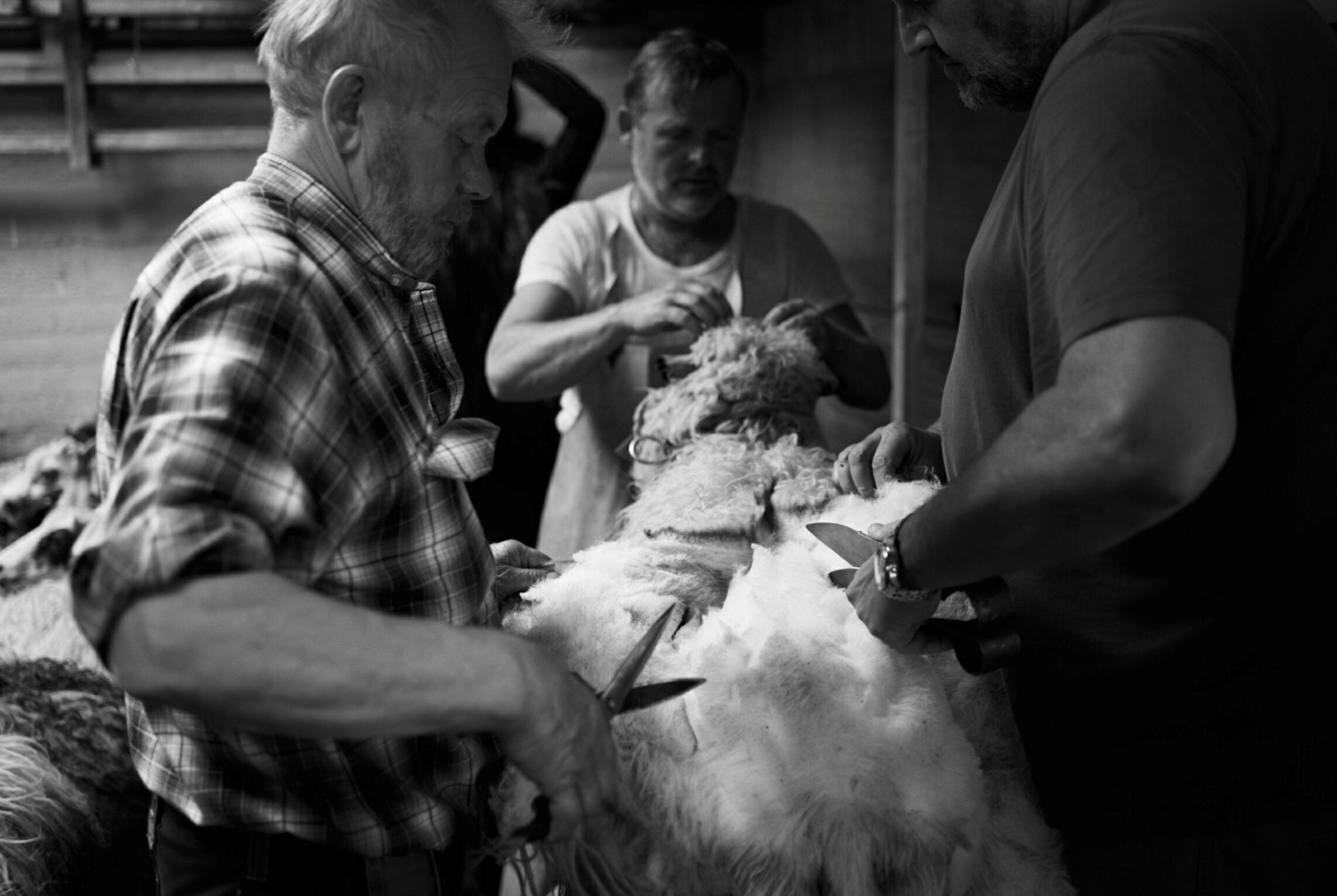Ressources
When and with whom the first sheep came to the Faroe Islands is not known. It was too long ago. It is likely that several sheep were lifted out of one or more boats and carried ashore through the cold waters of the North Atlantic. And since that unknown, long-ago day, the islands are full of sheep. Their wild wool; our wool knowledge; the respectful collaboration with small German manufactures; our appreciation for craftsmanship; the unique processing chain we have created for our farmer friends and ourselves; the philosophy we follow; - are our most important resources. No man is an island, everything is connected. Sheep, people, islands, countries, you, us. The name Føroyar (Faroe Islands) is derived from the Old Norse Færeyjar, literally meaning sheep islands. A name once given by the Norsemen and Norsewomen who settled the rugged and windswept islands during the Viking Age.
NO MAN IS AN ISLAND
Very few producers are allowed to personally accompany the production process of their articles from the very beginning. We are not just present. We are part of the action. In the Faroe Islands, we climb the mountains when the wild, free-roaming sheep are driven down into the valleys by men and dogs in the summer. Whole families and communities band together to accomplish this task. Teams are formed. Walkie talkies distributed. Pancakes stacked. Strategies followed. At shearing time, we stand in the pen with our hand shears and patiently cut raw wool, sheep by sheep, with peace and calm. The sheep of the Faroe Islands are small, tough and belong to the Nordic short-tailed sheep. Their wool is long-maned and thick; the high lanolin content and denseness of the fibers give the wild wool exceptional weather-resistant properties. The rain rolls off the sheep, so to speak. The outer hairs in particular are extremely water repellent and keep the finer undercoat dry for hours. We use all the wool for our products. Nothing should be thrown away. The beautiful, rich natural colors of Faroese sheep's wool range from wool white to gray and reddish brown to black. Faroese even has its own names for the sheep's many patterns and spottings.
Very few producers are allowed to personally accompany the production process of their articles from the very beginning. We are not just present. We are part of the action. In the Faroe Islands, we climb the mountains when the wild, free-roaming sheep are driven down into the valleys by men and dogs in the summer. Whole families and communities band together to accomplish this task. Teams are formed. Walkie talkies distributed. Pancakes stacked. Strategies followed. At shearing time, we stand in the pen with our hand shears and patiently cut raw wool, sheep by sheep, with peace and calm. The sheep of the Faroe Islands are small, tough and belong to the Nordic short-tailed sheep. Their wool is long-maned and thick; the high lanolin content and denseness of the fibers give the wild wool exceptional weather-resistant properties. The rain rolls off the sheep, so to speak. The outer hairs in particular are extremely water repellent and keep the finer undercoat dry for hours. We use all the wool for our products. Nothing should be thrown away. The beautiful, rich natural colors of Faroese sheep's wool range from wool white to gray and reddish brown to black. Faroese even has its own names for the sheep's many patterns and spottings.
HIGHT QUALITY, SUSTAINABLE & DURABLE
We are constantly developing our products and have already found ways to process the very special wool of the Faroese sheep. In doing so, we focus on sustainability, fairness and maximum quality. Every Nordic Wool Factory item has a story and a mission. We are inspired by the time when clothing was not a mass product. An old Faroese saying is: "Ull er Føroya gull" and means something like "Wool is Faroese gold". For centuries, wool and woolen clothing were the islands' most important exports. Their inhabitants traded knitwear for salt, sugar, coffee and other necessities in villages and stores; wool was their currency. To this day, Faroese people of all ages and from all parts of society are knitting. We too continue to spin our thread; search; try; discard; find.
We are constantly developing our products and have already found ways to process the very special wool of the Faroese sheep. In doing so, we focus on sustainability, fairness and maximum quality. Every Nordic Wool Factory item has a story and a mission. We are inspired by the time when clothing was not a mass product. An old Faroese saying is: "Ull er Føroya gull" and means something like "Wool is Faroese gold". For centuries, wool and woolen clothing were the islands' most important exports. Their inhabitants traded knitwear for salt, sugar, coffee and other necessities in villages and stores; wool was their currency. To this day, Faroese people of all ages and from all parts of society are knitting. We too continue to spin our thread; search; try; discard; find.



